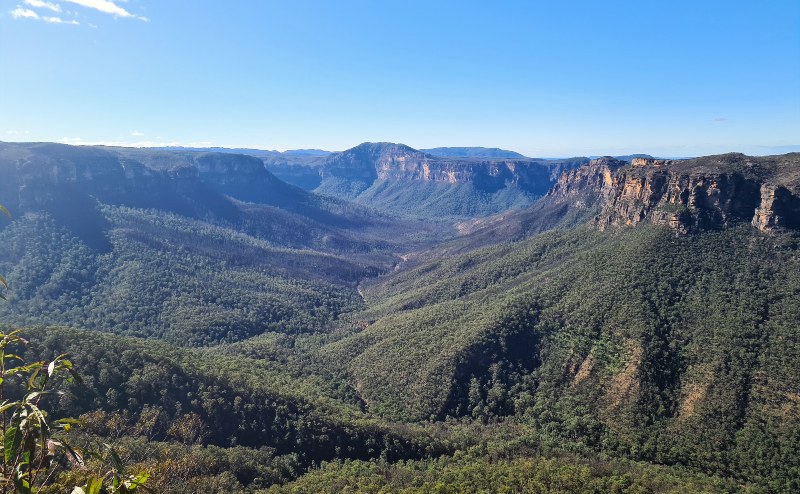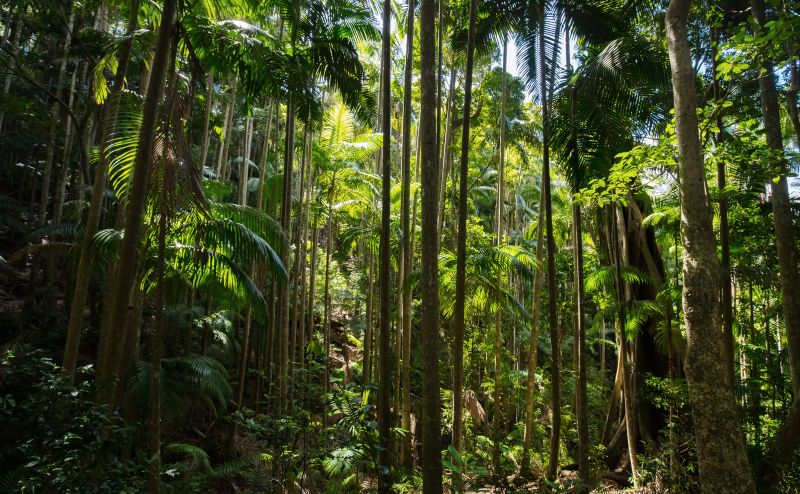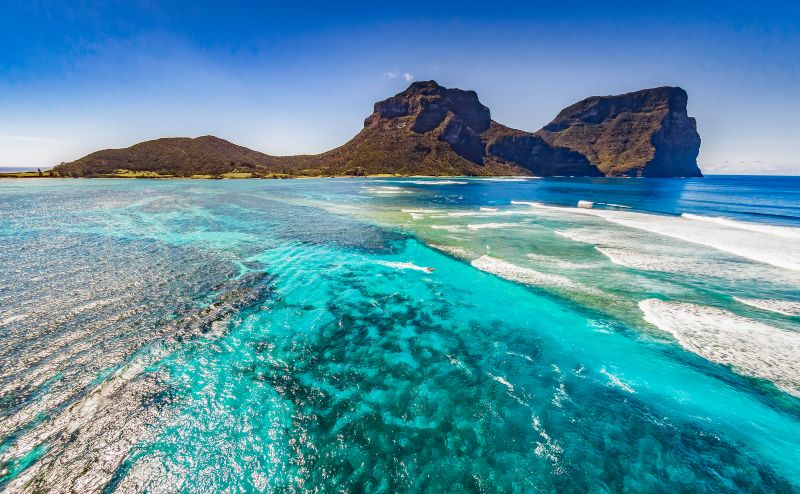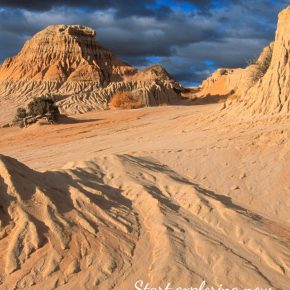6 UNESCO World Heritage Sites In NSW
Did you know there are six UNESCO World Heritage sites in NSW? One of these sites includes four different places, bringing the total locations you can visit to nine. Below we share the info you need to plan a visit and complete your NSW World Heritage passport.
Ok so there is no NSW UNESCO passport, I made that up 😉 but lots of travellers do like to tick off these sites on their travels so we thought we would help you with some info on these places that should be on your NSW bucket list.
This page contains affiliate links. Please read our disclosure policy for details.
What is a UNESCO site?
UNESCO awards titles of global recognition to sites of both cultural or natural significance. Currently, there are 1121 sites listed on the register with more added every year.
“World Heritage is the designation for places on earth that are of outstanding universal value to humanity and as such, have been inscribed on the World Heritage List to be protected for future generations to appreciate and enjoy.“
Source: UNESCO World Heritage Centre
Australia is home to 20 UNESCO sites, and there are six areas of significance in NSW so let’s see how much you know about them.
There are three times as many cultural sites as there are natural heritage sites. Some sites, including several in Australia, are recognised for both cultural and natural value.
Sydney Opera House
Ok, let’s start with the star of the show, the best-known symbol of Australia. The Sydney Opera House was added to the list in 2007 for its architectural and engineering brilliance. It is listed as “a masterpiece of creativity.”
Architect Jørn Utzon’s work was recognised as an outstanding example of modern architecture and one of the world’s most iconic structures. The silhouette of the Opera House never gets old even for those of us who live here.

How to experience it: Wander the outside of the building, touch the tiles (there are more than one million of them!), attend a performance, dine in one of her restaurants or book a guided tour.
Local tip: An evening light show, Badu Gili, that highlights ancient First Nations stories sees the eastern side of the Opera House shells illuminated 3 times per night.
We have reviewed the various tours on offer here and also shared the best vantage points for photographing it.
Greater Blue Mountains
The first thing most people think about when they think of the Blue Mountains is the Three Sisters, but with an area covering one million hectares, there is so much more to see.
The 10,300 square kilometre area was added to the list in 2000 for “wide and balanced representation of eucalypts habitats” and biodiversity.
In 1994 a Wollemi Pine was discovered deep in the mountains. It is one of the world’s oldest plants thought to date back to when dinosaurs walked the earth.
Local tip: No time to visit but want to see a Wollemi Pine? There are two in the Royal Botanic Gardens in Sydney.

Lots of people don’t realise the Greater Blue Mountains UNESCO site is not just the best-known parts of the Blue Mountains between Springwood and Mount Victoria but is made up of seven National Parks including;
- Blue Mountains National Park
- Wollemi National Park
- Yengo National Park
- Nattai National Park
- Kanangra-Boyd National Park
- Gardens of Stone National Park
- Thirlmere Lakes National Park.
The bushfires of summer 2019-2020 destroyed many hectares of land, but there is still much to explore, and fire-affected areas are on a path to recovery.
How to experience it: There are dozens of ways to explore the mountains, from short, easy hikes, numerous lookouts, and over 50 fun things to do that we have showcased here.
How to get there: These parks are located to the west of Sydney. Get busy planning your visit with our detailed Blue Mountain guide with bus, train and driving itineraries.
Australian Convict Sites
Spread across the country, this collection of eleven penal sites are considered the best surviving examples of large-scale convict transportation that highlights the impact of colonial transportation. These world heritage sites in Sydney are a must for colonial history buffs.
The Convict Sites were added because they are “the best surviving examples of large-scale convict transportation and the colonial expansion of European powers through the presence and labour of convicts”
Four of the eleven sites are in NSW:
- Hyde Park Barracks – Recently fully renovated and a must-see in my view
- Cockatoo Island – a great day out on Sydney Harbour
- Old Government House and Parramatta Park
- The Great North Road – which includes the oldest standing bridge on the Australian mainland.
So let’s take a look at how you can enjoy them.
Hyde Park Barracks
The Hyde Park Barracks closed for several months in 2019 for a complete overhaul that has made the building accessible and added interactive elements into the experience.

The new exhibition tells the stories of the people who lived in the barracks, the convict men and later the immigrant women who came to Australia in search of a new start.

How to experience it: Book a timed entry ticket and allow about 90 minutes to enjoy your self guided audio tour.
Cockatoo Island
Cockatoo Island was used for 30 years as a place of punishment for convicts who reoffended after they arrived in the colonies. While they were there, they built two dry docks, and the island went on to be a shipbuilding yard for over 100 years.

These days you can spend the night on the island, book one of the historic residences or stay in the campground with your own tent or theirs.
How to experience Cockatoo Island: There are also a bunch of ours you can take that include stories of attempted convict escape and haunted history to a 90-minute walking tour of the island and its many uses. The guides are excellent.
Old Government House
Old Government House in Parramatta Park is the oldest public building in Australia. Completed in 1800, it was used as the home to the Governors of New South Wales for 47 years until the building was constructed in the Royal Botanic Gardens.

The building is an excellent example of colonial Georgian architecture and has been maintained in a way that allows you to see how the last governors lived and worked in the property.
How to experience it: Today you can tour the house, furnished in the style of the early 1820s
How to get there: You can reach Old Government House in Parramatta by train from the city. There is also a Rivercat service from Circular Quay which makes a nice day trip. If you prefer to drive parking is usually plentiful on weekends, not so much on weekdays.
The Great North Road
Built to connect Sydney with the Hunter Valley this 240km road, also known as the Convict Trail, took convicts 8 years to construct. With incredible harsh terrain and punishing conditions, up to 700 men worked on the road at any one time.

How to experience it: Today you can hike sections of the road or complete the entire 42 km Old Great North Road trail over a couple of days. The NSW National Parks website has all the details you need.
How to get there: The best way to get to the Great North Road is by car.
Local tip: The Devines Hill walk will only take you one hour and offers views of Thomas James Bridge, the oldest still in use on the Australian mainland. If you’re lucky, you might spot a wombat or two.
Willandra Lakes Region – Lake Mungo
I know it looks more like the surface of the moon than the landscape of NSW but the Willandra Lakes Region is among the least known and visited of Australia’s world heritage areas.
This ancient site in south-western NSW was listed in 1981, the region includes a series of 17 dried lake beds with blue bush/saltbush, mallee trees, Cyprus pine and grasses in the adjoining landscape. Lake Mungo is one of the amazing Willandra Lakes.

For at least 50,000 years Aboriginal people lived on the shores of the lakes. There are 3 communities, Barkandji/Paakantyi, Mutthi Mutthi and Ngiyampaa people who are the traditional owners of the land in this region.
While investigating a section of the “Walls” in 1968, Professor Bowler noticed human remains emerging from the sand; this resulted in the discovery of Mungo Lady, dated to be over 40,000 years old.
Further discoveries included a range of stone tools, extinct animal bones and preserved footprints; then in 1974, Mungo Man came to the surface. In 2003 the CSIRO and three universities concluded the Mungos to be more than 40,000 years of age. This was and still is a huge discovery in the scientific and cultural story of this country.
Local tip: If your visit coincides with a full moon don’t miss a chance to join a full moon tour to see the moonlight over the Walls of China
How to experience it: Aboriginal ranger guides are an ideal way to experience a visit to Lake Mungo and the Walls of China: they are custodians both of the knowledge of the region’s culture and its unique natural history.
How to get there: Mungo National Park is a little over 10 hours drive from Sydney and about 90 minutes from Mildura. Consider booking a tour, you will get much more out of the experience.
Gondwana Rainforests of Australia
These rainforests in NSW and Queensland are the largest remaining area of subtropical rainforest in the world. Home to over 200 rare and threatened rainforest species. The ferns and plant life here date back tens of millions of years. They were added in 1986; you can read details of the inscription here.

There are 28 National parks included in the zone the best known among them Dorrigo, Washpool and Border Ranges in NSW and Lamington and Springbrook in Queensland.
How to experience it: One of the highlights in Wollumbin National Park is Wollumbin (Mount Warning). In 2015 the summit area of the Mountain was listed as a declared Aboriginal Place under the National Parks and Wildlife Act.
The Bundjalung people observe cultural and traditional restrictions forbidding the uninitiated from climbing the mountain, and visitors are asked not to climb the once popular, quite dangerous summit track.
For a more relaxing option, there’s Lyrebird track, a short,(0.6km return) walking route that leads from Mount Warning Road, across Breakfast Creek to a lookout set in subtropical rainforest.
Related: Check out our list of Waterfalls in NSW
Accessible walks are available in Dorrigo National Park west of Coffs Harbour. We highly recommend the Wonga Walk which includes the very beautiful Crystal Falls. Check it out on Google Street view.
How to get there: The south end of the area begins just west of Forster at Barrington Tops National Park about 3.5 hours north of Sydney and continues over the QLD Border.
Lord Howe Island Group
Located in the worlds southernmost coral reef 600km off the coast of NSW east of Port Macquarie Lord Howe Island earned its spot on the list for its incredible biodiversity.

The island, added to the register in 1982, is home to 300 permanent residents and at any one time, only 400 visitors are accepted. The island offers world-class diving and is a must-see for bird lovers with 14 species of seabirds breeding on the island.
How to experience the beauty of Lord Howe Island: Dive, snorkel, walk and join a bird watching tour, this is a natural paradise with plenty to do. I suggest a guided tour to get the most from your time; it’s the best way to learn about the unique wildlife.
How to get there: Lord Howe Island lies 600km off the NSW coast near Port Macquarie, just a 90-minute flight from Sydney. It’s not somewhere you can visit on a whim so be sure to plan your visit.












As an Aussie, I’m kind of embarrassed to admit that I have only been to two of there! But I am from in Victoria and currently live in Canada so maybe that’s a valid excuse? haha! Lord Howe Island has always been on my list though! Looks stunning!
Wow this is an amazing list. I have been to only 5 of them listed here. I will save up this post so I can visit the remaining as well
I loved your post. I have heard of some of the places but others, like Lord Howe Island, sound so amazing. As nature lovers and divers, we would love to visit the island and see everything above and below the waves. Thanks for intriguing me even more about your great country. I can’t wait to visit some day.
I have visited half the list so I must visit more once borders open.
I hope you do Lynnette, I hear the diving is amazing!
Lets swap states 🙂
There are many beautiful places around Sydney! I would love to see the landscapes of China Mungo the National Park!
I’m not telling you how many of these I have seen, it’s really just embarrassing to admit! I really need to spend some more time in NSW. Lord Howe Island seems to have popped up a lot for me laterly. I had no idea it was a UNESCO listed place, but it is firmly on my radar for a visit.
Would absolutely love to visit Australia one day. All of these places look absolutely amazing and especially the Gondwana Rainforests. Thank you for sharing 🙂
Thanks so much for sharing! I have saved this for our Australia Roadtrip next year!
Ours too! Fingers crossed we both get there this year
NSW looks so beautiful. Every time I see Australia photos, the country seems to get more & more beautiful. Saving this post for later!!!
Loved this! I go to Sydney every 2 years and I haven’t done most of the sites on this list – I will be adding them in for my next visit!